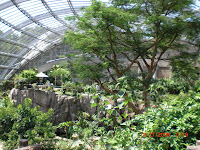Celebrate summer: festival style.
 |
| Portable lighted displays. |
If you
want to have some fun in the city then visit Hachioji (八王子市) during their annual summer festival,
which is the first weekend in August (Fri-Sun).
It was held every year for 50 years until the 2011 earthquake and
tsunami, which caused it to be canceled for that year.
 |
| The fireworks as seen from my balcony. |
The
festivities really begin about one week before the festival though when Fujimori Park has their fireworks show. Most of the fireworks are paid for by
donations from local businesses. It
starts out with fire walking (people walking over red hot coals) and then you
can see both typical and special fireworks in the shapes of smiley faces, anime
characters (Hello Kitty) and hearts.
The
festival is huge, spanning from the heart of Hachioji (near the train station)
and radiating out to the edges. It is mainly held along the street Route 20.
The
festival is a celebration of traditional Japan, so you can see many people wearing
yukatas (summer kimonos).
 |
|
Traditional dancers dressed in yukatas (summer kimono). |
Part of
the traditional experience includes Buddhist and Shinto religions, which provide
dashi (parade floats) and mikoshi (portable shrines).
 |
|
A dashi (parade float) used
for
performances.
|
The dashi are pulled through the streets by
volunteers during the day and in the evening hold performances. Each dashi competes with each other through
the telling of stories where demons, dragons and spirits battle for the most
dramatic performance.
 |
| A mikoshi (portable shrine). |
The mikoshi are
carried throughout the city. Certain clothing
called happi is worn while pulling or carrying these
floats/shrines.
The roads
are closed for performances such as taiko drum shows, traditional dances, ice
sculpting and more.
 |
| Female drum performance. |
The
sidewalks are filled with food, game and toy booths. The main foods sold are shaved ice, chocolate
covered bananas, baked potatoes with butter, fried noodles and fried balls of octopus.
 |
| Drum performance. |
You can win
prizes at the game booths such as toys, phone accessories and even goldfish. You win goldfish by using a paper fan to try
to “scoop” them into a bowl. The trick
is to do it quickly enough so that the paper doesn’t disintegrate from the
water and weight of the goldfish.
 |
| Food, game and toy booths. |
An
example of a toy booth is one that sells masks of popular anime
characters.
 |
| One of many traditional displays. |
Here's a video of the festival by photojpn.





















